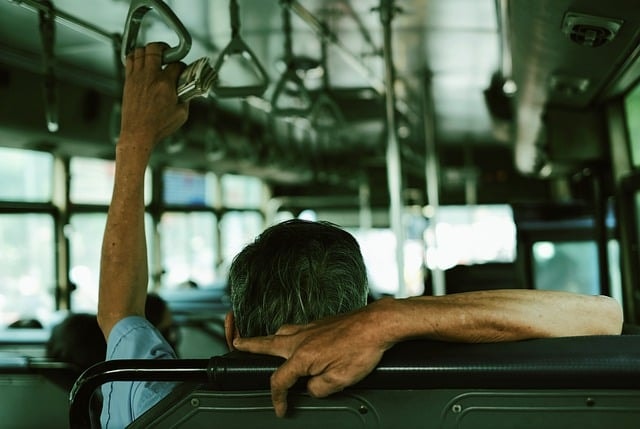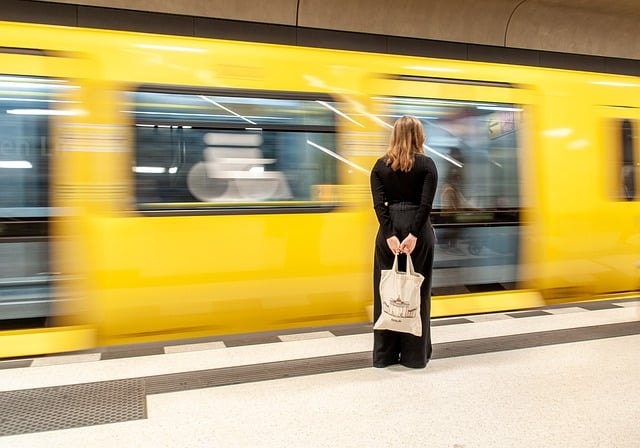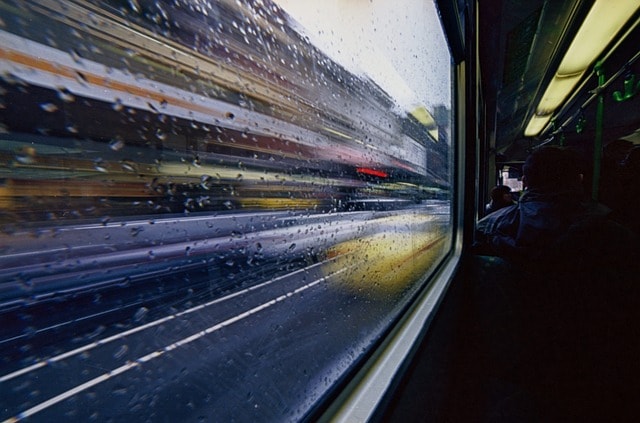The best way to get around Dublin is through a combination of public transportation, walking, and cycling, depending on your preferences and the areas you plan to visit. Dublin, the vibrant capital of Ireland, is a city that’s rich in history, culture, and charm.
Public transportation is helpful for covering longer distances and reaching areas outside the city center efficiently. Walking is logical for exploring Dublin’s historic streets, as many major attractions are within close proximity to each other. Cycling is for those who want a quicker way to navigate the city while enjoying its scenic views, with bike lanes and bike-sharing options available throughout the city.

Is Public Transport a Good Option to Get Around Dublin?
Yes, public transport is a good option to get around Dublin. The city’s public transportation network is well-developed, with buses, trams, and trains covering most areas efficiently. Dublin Bus operates an extensive network of routes throughout the city and its suburbs, making it easy to reach key destinations. The Luas tram system is another convenient option, with two lines—Red and Green—connecting major areas, including the city center, shopping districts, and business hubs.
For coastal areas, the DART (Dublin Area Rapid Transit) provides quick and scenic travel along the coast. Public transport in Dublin is generally reliable, affordable, and a practical choice for both tourists and locals to navigate the city.
Pros of Using Public Transport in Dublin
-
Comprehensive Coverage: Dublin’s public transport network covers a wide area, including the city center, suburbs, and nearby towns. This makes it easy to reach most destinations without the need for a car.
-
Affordable: Compared to other major cities, Dublin’s public transport is relatively affordable, especially with travel cards like the Leap Card that offer discounted fares.
-
Environmentally Friendly: Using public transport is a greener option compared to driving, helping to reduce traffic congestion and lower your carbon footprint.
Cons of Using Public Transport in Dublin
-
Peak Hour Crowds: Public transport can be crowded during peak hours, particularly on weekdays between 7:00 AM and 9:00 AM and 4:30 PM and 7:00 PM.
-
Delays: While generally reliable, Dublin’s public transport system can experience delays, particularly during adverse weather conditions or roadworks.
-
Limited Night Services: Although there are night buses available, the frequency and coverage are limited compared to daytime services.
Overall, public transport is a good option for getting around Dublin, especially for those who want to avoid the hassle of driving in a busy city and prefer an easy and affordable way and eco-friendly way to travel.

What Are the Main Options of Public Transport?
Dublin offers a variety of public transport options, including buses, trams (LUAS), and trains (DART). Each of these modes of transport serves different areas of the city and caters to different travel needs. Understanding how to use these services effectively will help you navigate Dublin with ease.
Buses
Dublin Bus is the primary bus service provider in the city, operating over 120 routes that cover the entire Dublin area, including the city centre zone, suburbs and neighboring towns. Buses are a popular and convenient option, especially for reaching areas not serviced by the LUAS or DART.
-
Frequency: Buses in Dublin run frequently, with many routes offering services every 10-15 minutes during peak hours. However, the frequency can decrease during off-peak times and weekends.
-
Routes: The bus network is extensive, with routes connecting the city center to residential areas, shopping districts, and tourist attractions. Some key routes include the 46A, which connects the city center with the southern suburbs, and the 145, which serves areas in the west.
-
Night Buses: Dublin Bus also operates a limited number of night buses, known as “Nitelink” services, on weekends. These buses run from the city center to various suburbs between midnight and 4:00 AM.
LUAS
The LUAS is Dublin’s light rail tram system, consisting of bus stops on two lines: the Red Line and the Green Line. The LUAS is known for being fast, efficient, and a great way to avoid road traffic.
-
Red Line: The Red Line runs from the Docklands (Point Village) in the east to Tallaght and Saggart in the southwest. It passes through key areas such as Heuston Station, Smithfield, and The Liberties.
-
Green Line: The Green Line runs from Broombridge in the north to Brides Glen in the south, passing through the city center, St. Stephen’s Green, and Dundrum.
-
Frequency: LUAS trams run frequently, with services every 5-10 minutes during peak hours. The trams are also punctual, making them a reliable option for commuters and tourists alike.
DART
The DART (Dublin Area Rapid Transit) is a suburban rail service that runs along the coast, from Malahide and Howth in the north to Greystones in the south. The DART is particularly popular for those living in or visiting coastal areas.
-
Coverage: The DART serves several coastal towns and suburbs, including Blackrock, Dún Laoghaire, and Bray, making it ideal for trips to the seaside.
-
Frequency: DART trains run every 10-20 minutes, depending on the time of day. Services are more frequent during peak hours.
-
Scenic Route: The DART offers some of the most scenic train routes in Ireland, with stunning views of Dublin Bay and the Irish Sea.
How To Pay for Public Transport in Dublin?
You can pay for public transport in Dublin with a Leap Card, contactless payment or cash depending on your preference and convenience. The most popular payment method is the Leap Card, a prepaid travel card that offers discounted fares across all forms of public transport.
1. Leap Card
The Leap Card is a smart card that can be topped up with credit and used to pay for travel on Dublin Bus, LUAS, DART, and commuter trains. The Leap Card offers significant savings compared to cash fares and is the preferred payment method for most Dubliners.
-
Where to Buy: Leap Cards can be purchased online, at convenience stores, and at ticket machines located in LUAS and train stations.
-
Top-Up: You can top up your Leap Card online, via the Leap Top-Up App, or at any location that sells Leap Cards.
-
Fare Capping: The Leap Card has a daily and weekly fare cap, meaning you won’t pay more than a certain amount, no matter how many trips you take. This makes it a cost-effective option for regular commuters.
2. Cash Fares
While the Leap Card is the most convenient way to pay, cash fares are still accepted on Dublin Bus services. However, exact change is required, and cash fares are generally more expensive than Leap Card fares.
3. Contactless Payment
Some services, particularly the LUAS and DART, also accept contactless payment via debit or credit cards. This option is useful for occasional travelers or tourists who may not have a Leap Card.
4, Ticket Machines
For the LUAS and DART, tickets can be purchased from ticket vending machines, located at each station. These machines accept both cash and card payments, and you can buy single, return, or daily tickets.

Is Cycling a Good Option To Get Around Dublin?
Yes, cycling is a good option to get around Dublin, especially for those who enjoy a more active mode of transportation. Dublin is increasingly becoming a bike-friendly city, with a growing network of dedicated cycling lanes and bike paths that make it safer and more convenient for cyclists. The city is relatively flat, which makes cycling an easy and enjoyable way to navigate.
For visitors, the Dublinbikes bike-sharing scheme is a convenient and affordable option, with numerous stations located throughout the city. You can rent a bike for short trips or a full day, allowing you to explore Dublin at your own pace.
Cycling is particularly ideal for getting around the city center, where traffic can be heavy, and parking is limited. It’s also a great way to explore some of Dublin’s scenic parks and waterfronts, such as Phoenix Park or the Grand Canal. However, cyclists should be aware of traffic rules and always wear a helmet for safety.
What Are the Cycling Facilities Like in Dublin?
Dublin’s cycling infrastructure has seen significant improvements in recent years, with dedicated bike lanes, bike-sharing schemes, and secure bike parking facilities becoming more widespread.
-
Bike Lanes: Dublin has an extensive network of bike lanes, particularly in the city center and along major routes. These lanes are separated from traffic in many areas, providing a safer and more pleasant cycling experience.
-
Bike Sharing: Dublinbikes, the city’s public bike-sharing scheme, is a convenient option for short trips around the city. With over 100 stations across Dublin, you can pick up a bike in one area and drop it off in another. The first 30 minutes of each ride are free, making it a cost-effective way to get around.
-
Bike Parking: Secure bike parking facilities are available throughout the city, including at major transport hubs, shopping centers, and public spaces. These facilities make it easy to park your bike safely while you explore the city.
-
Cycling Routes: Dublin offers several scenic cycling routes, including the Grand Canal Way, the Royal Canal Greenway, and the Dublin Bay Cycle Route. These routes provide a great way to see the city’s sights while enjoying a leisurely bike ride.
Tips for Cycling in Dublin
When cycling in Dublin, it’s important to stay safe and make the most of the city’s bike-friendly infrastructure. Here are some tips to help you navigate Dublin on two wheels:
-
Wear a Helmet: While not legally required, wearing a helmet is strongly recommended for safety.
-
Use Bike Lights: If you’re cycling at night or in low-light conditions, make sure your bike is equipped with front and rear lights.
-
Follow Traffic Rules: Cyclists in Dublin are required to follow the same traffic rules as motorists. This includes obeying traffic lights, using hand signals, and riding on the correct side of the road.
-
Be Aware of Weather: Dublin’s weather can be unpredictable, so be prepared for rain or strong winds. Waterproof clothing and a sturdy bike are essential for comfortable cycling in all conditions.
Is Walking a Practical Way to Get Around Dublin?
Yes, walking is a practical and enjoyable way to get around Dublin, especially in the city center. Dublin is a relatively compact city, with many of its main attractions, such as Trinity College, St. Stephen’s Green, Dublin Castle, and the Temple Bar area, all within walking distance of each other. This makes it easy to explore the city centre's historic sites, vibrant neighborhoods, and cultural landmarks on foot.
Walking allows you to soak in the atmosphere of Dublin’s streets, discover hidden gems like local cafes and shops, and enjoy the city's charming architecture at your own pace. It’s also an ideal way to avoid traffic congestion, which can be common in the city, and you won’t need to worry about parking.
Advantages of Walking in Dublin
-
Proximity of Attractions: Many of Dublin’s top attractions, including Trinity College, Dublin Castle, and Temple Bar, are within walking distance of each other. This makes walking an ideal way to explore the city’s rich history and culture.
-
Pedestrian-Friendly Streets: Dublin’s city center features several pedestrianized areas, including Grafton Street and Henry Street, where you can stroll, shop, and dine without the hassle of traffic.
-
Discover Hidden Gems: Walking allows you to discover Dublin’s hidden gems, such as charming alleyways, local cafes, and independent shops that you might miss if you’re traveling by car or public transport.
-
Health Benefits: Walking is a great way to stay active and healthy while exploring the city. Dublin’s clean air and green spaces, like St. Stephen’s Green and Phoenix Park, make walking a pleasant experience.
Tips for Walking in Dublin
-
Wear Comfortable Shoes: Dublin’s streets are a mix of cobblestones and paved surfaces, so comfortable walking shoes are a must.
-
Stay Weather-Prepared: Dublin’s weather can change quickly, so it’s a good idea to carry an umbrella or wear a waterproof jacket.
-
Use Maps and Apps: While Dublin is easy to navigate, using a map or a navigation app can help you find your way to specific destinations or explore new areas of the city.
-
Explore by Neighborhood: Dublin’s neighborhoods each have their own unique character. Spend time walking through areas like the Georgian Quarter, the Liberties, and Docklands to get a true sense of the city’s diversity.
Is Renting a Car Recommended To Get Around Dublin?
Renting a car is generally not recommended for getting around Dublin, especially if you plan to stay within the city center. Dublin's traffic can be heavy, and finding parking can be challenging and expensive. The city’s compact size and well-connected public transport system make it easy to navigate without a car.
Driving in Dublin can also be complicated due to one-way streets, narrow roads, and the unfamiliarity of driving on the left side of the road if you’re from a country where driving is on the right. Additionally, many of the city's attractions are located within walking distance of each other, making a car unnecessary.
However, if you plan to explore the surrounding countryside or take day trips to destinations outside Dublin, such as the Wicklow Mountains or the coastal towns, renting a car might be more convenient. For those trips, a rental car also offers flexibility and access to areas that may not be easily reachable by public transport.
Challenges of Driving in Dublin
-
Traffic Congestion: Dublin is known for its traffic congestion, particularly during peak hours. Navigating the city by car can be slow and frustrating, especially in the city center.
-
Limited Parking: Parking in Dublin can be challenging and expensive. On-street parking is limited, and parking garages charge high fees. In some areas, finding a parking spot can be nearly impossible, especially during busy times.
-
Narrow Streets: Dublin’s historic city center features many narrow, one-way streets that can be difficult to navigate, especially for drivers unfamiliar with the area.
-
Pedestrian Zones: Several areas of Dublin’s city center are pedestrianized, meaning cars are not allowed. This can make it difficult to reach certain destinations by car.
Alternatives to Renting a Car
If you’re planning to stay within Dublin or only take occasional trips outside the city, consider using public transport, cycling, or walking instead of renting a car. These options are more convenient and cost-effective for getting around Dublin.
Are Taxis a Good Option To Get Around Dublin?
Taxis are a convenient option for getting around Dublin, especially if you’re traveling with luggage, in a group, or need to reach a destination that’s not easily accessible by public transport. Dublin’s taxis are readily available and can be hailed on the street, booked by phone, or ordered through ride-hailing apps like Free Now.
Pros of Using Taxis in Dublin
-
Convenience: Taxis offer door-to-door service, making them a convenient option for reaching specific destinations, especially if you’re traveling with heavy luggage or in bad weather.
-
Availability: Taxis are widely available throughout Dublin, particularly in the city center and near major transport hubs like Dublin Airport, Heuston Station, and Connolly Station.
-
Safety: Dublin’s taxis are regulated and safe, with drivers required to display their identification and operate under strict licensing rules.
Cons of Using Taxis in Dublin
-
Cost: Taxis in Dublin can be expensive, particularly for longer journeys or during peak hours when traffic is heavy. Fares increase at night and on public holidays.
-
Traffic Delays: Like all vehicles, taxis are subject to Dublin’s traffic congestion, which can lead to delays and higher fares.
-
Limited Availability During Peak Times: During peak hours or major events, it can be challenging to find a taxi, and you may need to wait longer than usual.
Tips for Using Taxis in Dublin
-
Use Ride-Hailing Apps: Apps like Free Now allow you to book and track your taxi, providing an estimated fare and reducing the hassle of hailing a taxi on the street.
-
Share Rides: If you’re traveling with others, consider sharing a taxi to split the cost.
-
Know Your Route: While Dublin taxi drivers are generally knowledgeable, it’s a good idea to have an idea of your route to avoid unnecessary detours.

How To Get Around Dublin Without a Car?
Getting around Dublin without a car is easy and convenient, thanks to the city’s well-developed public transportation, walkable streets, and bike-friendly infrastructure. The Dublin Bus network covers most areas of the city, offering an efficient way to reach key destinations, while the Luas tram system connects major areas, including shopping districts and the city center.
For coastal trips, the DART (Dublin Area Rapid Transit) provides quick and scenic travel along the coast. Walking is also a practical option, as Dublin’s city center is compact, with many attractions like Trinity College, Temple Bar, and St. Stephen’s Green within easy reach.
Taxis and ride-sharing services like Uber are readily available, offering a flexible option for those who prefer not to use public transport. Overall, a combination of these options allows you to navigate Dublin comfortably without the need for a car.
Tips for Getting Around Dublin
Navigating a new city can be challenging, but with a few tips, you can make getting around Dublin a smooth and enjoyable experience.
Plan Your Journey
Before setting out, take a few minutes to plan your journey. Use apps like Google Maps or Transport for Ireland’s Journey Planner to find the best routes and transport options for your destination.
Use a Leap Card
If you’re staying in Dublin for more than a day or two, consider getting a Leap Card. This smart card offers discounted fares across all forms of public transport and can save you money during your stay.
Be Aware of Peak Times
Dublin’s public transport and roads can get crowded during peak hours of rush hour, typically from 7:00 AM to 9:00 AM and 4:30 PM to 7:00 PM on weekdays. If possible, plan your travel outside these times to avoid delays.
Explore by Neighborhood
Dublin’s neighborhoods each have their own unique charm, so take the time to explore different areas of the city. Spend a day in the historic Liberties, stroll through the Georgian Quarter, or enjoy the seaside vibes in Sandymount.
Stay Weather-Prepared
Dublin’s weather can be unpredictable, with rain showers possible at any time of year. Always carry an umbrella or wear a waterproof jacket, especially if you’re walking or cycling.
Use Local Knowledge
Don’t hesitate to ask locals for directions or recommendations. Dubliners are known for their friendliness and will often be happy to help you find your way or suggest things to see and do.
FAQs On Best Way To Get Around Dublin
1. What is the best way to get around Dublin?
The best way to get around Dublin depends on your needs. Public transport is efficient and affordable, cycling is great for short trips, and walking is ideal for exploring the city center.
2. Is public transport reliable in Dublin?
Yes, Dublin’s public transport is generally reliable, with frequent services on buses, LUAS, and DART. However, delays can occur during peak hours or bad weather.
3. Can I get around Dublin without a car?
Absolutely. Dublin has excellent public transport, cycling facilities, and is very walkable, making it easy to get around without a car.
4. Is it safe to cycle in Dublin?
Yes, Dublin is becoming more cycle-friendly with an expanding network of bike lanes. However, it’s important to follow traffic rules and wear a helmet for safety.
5. What is the cheapest way to travel around Dublin?
Using a Leap Card on public transport is the most cost-effective way to get around Dublin, offering discounted fares on buses, LUAS, and DART.
